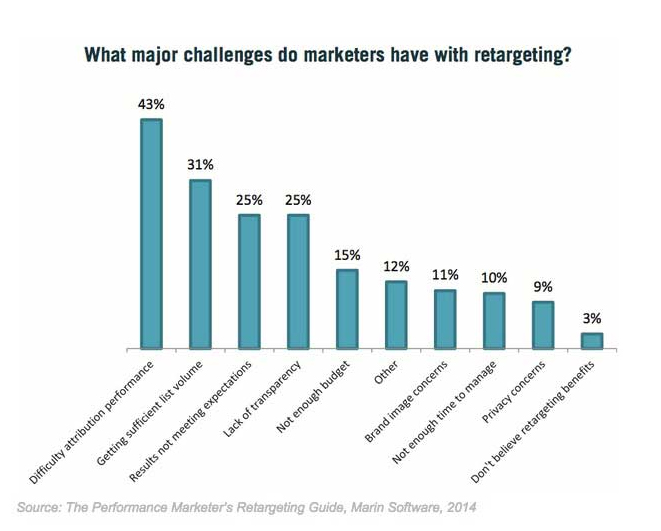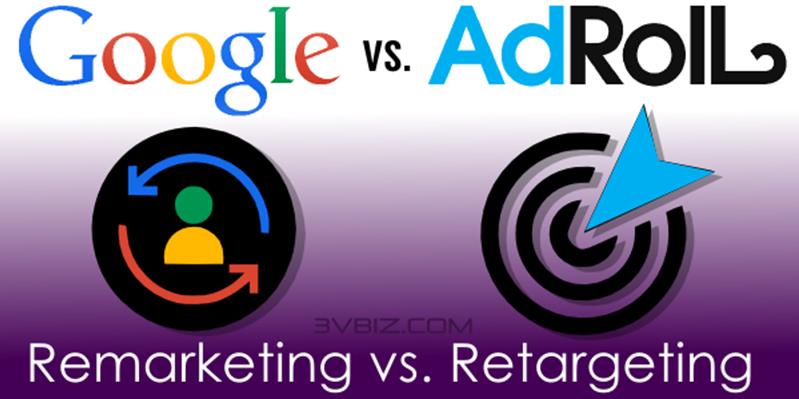Remarketing Vs. Retargeting: How Google's Advertising Algorithm Works?
Retargeting and Remarketing are two different terms. Despite having two distinct meaning both the terms are buzzing in the field of marketing interchangeably. It is worth mentioning here that you must have to use the right word at the right place.
If you don’t know the exact difference between these two terms, you will end up writing for the wrong sort of ads!
Hence, if you are working in the world of marketing, then you must have to know the differences between these two different yet same terms of online marketing. Before scratching the head to explore the difference between remarketing and retargeting, let’s have a quick overview of remarketing and retargeting.
Understanding Remarketing and Retargeting
Remarketing
Remarketing referes to digital tags to target the ads to the users who have visited the site before but not converted. Remarketing aims at more motivated people. These are those who have stepped into the buying funnel, browsed the site or even gone so far as to add the product to the shopping cart, but they disappeared or abandoned their cart before making any purchase.
Remarketing initiative is designed to tempt those prospect back to the cart by making the shopping experience more personalized through personalized emails and reminders for further offering and information. Remarketing allows marketers to know what have made customers to abandon the cart and help you to steer them back to the site. Remarketing strategy is worth investing in. Search Engine Journal Report 2016 recently revealed that 91% of industry expert thinks that remarketing is an effective online marketing strategy.
Retargeting
Retargeting refers to multiple approaches to marketing. Most commonly it referred as online placement or display of ads to target the users who have interacted your site in a specific way. After getting the visitor on the website, click on the product or take a certain action that you want them to take and get information in the form of a cookie which is set in their browser. You can utilize such information to retarget your audiences with the ads based on their interest once they leave your site. Google Display Network as a third party place such ads and allow to make your ads occur on the other sites which visitors use on a regular basis.
We can divide retargeting further into two categories including onsite retargeting and off site retargeting. There are different strategies in these two heads which you can use depending on the kind of interaction which you want to target.
Offsite retargeting means you are targeting a group of the customer which have no interaction with your site but they have similarities with your previous customers and you want them to be in your sales funnel. In offsite interaction you can target your audiences through their searches. Whereas, in the case of onsite interaction you target individuals who had some interaction with your site. These are the individuals with some sort of past interaction with your site, but they have not completed the sales due to any reason. On-site retargeting allows you to increase conversions and retain those who have already expressed the interest with your brand. This is the point where confusion gets started and sometimes on site retargeting also referred as remarketing.
Remarketing vs. Retargeting
Any answer on the subject of retargeting vs. remarketing start with the question do you know what these digital marketing strategies are?
If you don’t have a clear idea on the nuance of these strategies, then you would not be able to use both of them appropriately. First of all, these two sounds similar so we can use them interchangeably. Here is list of few differences between remarketing and retargeting.
Purpose
When it comes to talking about the purpose and objective of these marketing strategy, it can be said that remarketing and retargeting work hand in hand to increase the volume of conversions. However, despite having inherent similarities, these two services have two very different groups of prospects.
The main difference between the two is their platforms. Remarketing relies on email whereas, retargeting relies on internet cookies. Remarketing morphed from its original definition to be a Google specific term. Today remarketing means two things email remarketing to influence people to complete their purchase and Google AdWords.
Users
Remarketing and retargeting have entirely different users. Retargeting targets at the genuinely motivated people. They are those who have added something to the shopping cart or performed any other action in history to express their interest in buying. On the other hand, remarketing focus on people who are somewhat or moderately interested in buying a particular product. These are the users who have visited the website, but they haven’t taken any action to express their interest in making a purchase. The objective of remarketing is to be at the top of mind. It is all about serving ads to before the prior visitors.
Focus
Retargeting is more focused on paid ads. It can take a variety of forms and target a broad range of individuals. Whereas, remarketing focuses on email campaigns. It allows marketers to reach out the audiences who have already have interactions with your website.
Third Party Network
Retargeting is more appealing as compared to remarketing because a third party network like AdBrite or Google display network is involved in this case of marketing. Retargeting allows marketers to reach the larger users wherever they are because it can cover millions of sites at the same time. In the realm of remarketing marketers have a chance to choose from a variety of different channels/targeting strategies as well.
Rate of Engagement
As compare to non-retargeted display campaign, the retargeting campaign has a significantly high rate of engagement. Marketers starting out retargeting must have to be aware of some common pitfalls of this type of marketing. Because sometimes retargeting effort annoy users of creating the feeling of mistrust among customers.
Support and Return on Investment
The last point to emphasize about retargeting is an emphasis on the notion that retargeting significantly help the research phase of the buying process. The intent of marketers in the buying cycle is to be at the top of the mind.
Concerning return on investment retargeting is more challenging than remarketing. According to a research 43% marketers suggest understanding and attributing performance across different channels in case of retargeting is difficult. This is because it is tough to measure the overall impact of a display campaign.

Retargeting is an important part of marketing toolkit, but it needs special attention to understand the frequency and context of the ads. On the other hand remarketing drive high conversions to the site. So the strategy is main point of difference between remarketing and retargeting. The strategy is a used to reach the potential customer who left had left the website without making a purchase. Retargeting relies on cookies which are used to drop ads whereas remarketing use emails.
End Note
Performance based display marketing is an emerging type of marketing, and it is continuously growing like a wild fire. Like most of the thing in digital space, the difference between remarketing and remarketing is the biggest source of confusion. These two terms of digital marketing use cookies to serve ads to the users. Both terms are used to reach potential customers who have visited your site to re-engage them or influence them to perform the desired action. Both retargeting and remarketing are effective, but the combination of both is a more effective strategy which can improve your overall profits.
Related Posts
Blackmail is a serious crime that can cause immense stress and fear.
In today's data-driven world, databases form the backbone of countless applications and systems that power businesses across industries.
It’s no longer a hidden fact that social media platforms like Facebook affect the mental health of users.
Relocating an IT company is a significant endeavor that involves careful planning, coordination, and execution.
Today maintaining office security has become an important concern for businesses of all sizes.
A registered office address is a fundamental requirement for any business entity, whether it’s a corporation, limited liability company (LLC), or partnership.













Comments
comments powered by Disqus